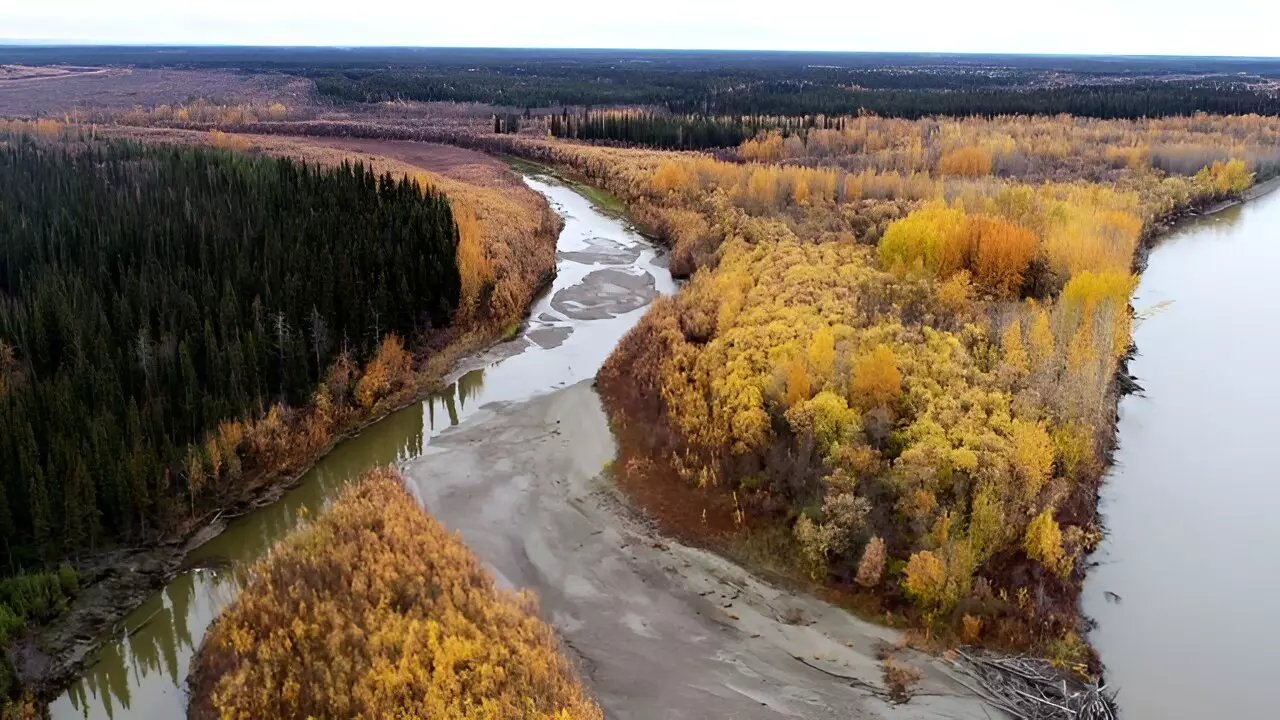The Arctic is undergoing profound transformations due to climate change, with alarming consequences for both the environment and local populations. One particular aspect of this crisis is illustrated by the behavior of the Yukon River, which flows through Alaska and eventually drains into the Bering Sea. The river’s actions are not merely hydrological; they are tied intricately to the thawing of permafrost, a phenomenon that is reshaping the landscape and posing serious threats. Within this context, researchers have uncovered a concerning secret hidden in the permafrost: mercury. The mercury, which has been sequestered in the frozen ground for thousands of years, is now being released into the ecosystem as global temperatures rise.
As temperatures in the Arctic increase at rates up to four times faster than the global average, mercury locked within permafrost is finding its way into the atmosphere, soil, and waterways. A study conducted by scientists at USC Dornsife College has introduced innovative methodologies for estimating the amount of mercury being released, as well as the total quantities still encased within the permafrost. Given that there are approximately five million people living in the Arctic, with over three million in areas where permafrost is predicted to disappear by 2050, the potential implications of this mercury release are profound—not only for environmental health but also for human well-being.
Mercury’s journey from the atmosphere to the Arctic tundra is rooted in natural atmospheric processes that often lead to pollutant accumulation at high latitudes. The chemical properties of mercury allow it to tether itself to various environmental mediums, dominating the Arctic landscape with concentrations far exceeding those in oceans, soil, and the atmosphere combined. Much of this mercury initially enters the ecosystem through airborne particles and then settles into the soil. Over centuries, it becomes part of the permafrost as plant life absorbs it and subsequently decays. But as the Arctic warms and permafrost thaws, the stored mercury is reintroduced into the environment, increasingly becoming available for uptake by plants and animals, subsequently entering the human food chain.
The study spearheaded by USC Dornsife included collaborations with other esteemed institutions, focusing primarily on the Yukon River Basin. Researchers investigated areas around two remote Alaskan villages—Beaver and Huslia—to better understand the scale of mercury release. Traditional methods of measuring mercury concentration relied on relatively shallow permafrost core samples, which yielded inconsistent results. However, by analyzing deeper sediment layers along riverbanks, researchers made significant breakthroughs in accurately determining mercury concentrations. Their findings revealed that the river’s dynamics played a crucial role in mobilizing mercury-laden sediments, drastically improving the precision of estimates regarding the mercury that may be released in the coming decades.
The Interplay Between Erosion and Reburial
A particularly intriguing aspect of the research was the realization that while mercury-laden sediments are indeed eroded from riverbanks, they are also redeposited in alternate locations, such as sandbars and beaches. This dual process of erosion and reburial adds layers of complexity to mercury dynamics in the Arctic. According to researcher Isabel Smith, understanding these processes is essential to accurately gauge the threat posed by mercury as permafrost continues to thaw. Interestingly, sediment grain size was also found to be a determining factor in mercury concentration, which could aid in identifying areas at risk.
Although the immediate impact of mercury release may not seem catastrophic, the long-term consequences could be dire for local communities relying on hunting and fishing for sustenance. The accumulation of mercury in fish and game raises urgent health concerns, as humans inadvertently increase their exposure through their diets. While drinking water remains less vulnerable to contamination, the potency of mercury as it moves up the food chain remains a pressing issue.
The study’s authors hope that by advancing methodologies to assess mercury levels accurately, they can contribute to a clearer understanding of this “mercury bomb” and its implications. The ongoing research promises to yield insights that can help mitigate potential threats while preserving the health and well-being of Arctic inhabitants grappling with an uncertain future.
The emerging evidence surrounding mercury release from melting permafrost serves as a stark reminder of the interconnectedness of climate, environment, and human health. As changes in the Arctic continue to unfold, it becomes increasingly vital to develop effective strategies for monitoring and managing these risks. Understanding how mercury behaves, how it is mobilized, and its long-term implications can enable proactive measures to protect vulnerable populations and ecosystems against this hidden but formidable threat. The scientific community must continue to collaborate, innovate, and amplify efforts to unveil the full scale of this issue, for the health of the Arctic and its peoples hangs in the balance.


Leave a Reply